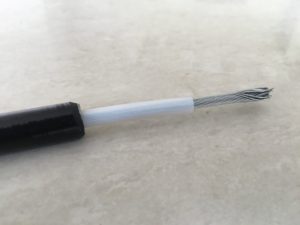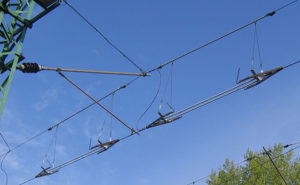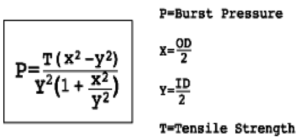The benefits of PTFE as an electrical insulator are well known. The high dielectric strength and breakdown voltage of PTFE allows it to be used in applications where standard insulation materials would fail.
In our experience, we have seen PTFE skived tapes used as wrapping around high-voltage junctions and circuits, PTFE components used as transducer covers and high-voltage casings and PTFE pads used to shield metal bodies from one another in electrical and thermal applications.
PTFE (Teflon®) tubes find similar uses as electrical insulators, although one really needs to dig deep to see where exactly they are used. Ever since we started manufacturing PTFE (Teflon®) Tubes, we have begun exploring its application and approaching various clients currently making insulation assemblies to understand whether there is a possibility to use PTFE in their products.
PTFE (Teflon®) Tubes in Cables
The requirement of cables to have a single outer casing that houses a variety of conductors necessitates the use of an insulating medium. PTFE tubes are used to shield each conductor from the next. In this application, it is essential that the tube is both flexible and free of any cracks/inclusions that would affect the insulating properties.
Additionally, since the requirement may be for a cable that is continuous and without joints, the PTFE tube would itself need to be continuous. It is therefore imperative to be able to manufacture a continuous tube that would be free from any defects for a length of at least 150 to 300 meters.
It has taken extensive research and multiple trials to attain a level of extrusion that guarantees a flawless, continuous length of tube.
PTFE Tube forms the insulating medium around the cable core
PTFE (Teflon) Tubes in Short Neutral Sections
While the tubes used inside cables are usually thin-walled tubes (within 1mm wall thickness), there are applications where thick-walled tubes form the outer casing of insulating assemblies.
The Short Neutral Section (SNS), is an insulating assembly used in overhead lines for the railways. Typically, the pantograph will run along a high-voltage wire above the train, allowing current to be supplied to the train. The current is drawn from a sub-station and when switching from one sub-station to the next, the pantograph will pass over the neutral section. The assembly ensures that the wires from two separate sub-stations do not make contact. Hence, it is important for the insulating medium to be effective. Furthermore, since the pantograph runs over the neutral section at high speed, it requires an insulator that is also capable of high wear resistance.
We were approached by the railways to develop this assembly. The core of the product is the thick-walled PTFE tube, which is combined with additives to improve wear resistance, while maintaining the dielectric properties.
PTFE Tube used as an outer sheath for electrical and wear properties
Conductive or Anti-Static PTFE Tube
Because PTFE has such a high resistance to current, there are areas where this becomes a problem. With no way to pass through PTFE, there is the possibility that excess static discharge simply collects on the surface of the material. Once a critical mass of discharge is reached, there is a high possibility of sparking.
In applications involving flammable vapours, such sparking can be very dangerous. To mitigate this issue, fillers such as carbon are added to PTFE to allow for some static discharge to take place through the material. The addition of carbon reduces the insulating properties of PTFE to some extent, but the end properties of the material are still far above any regular insulators.
There are multiple other uses for PTFE (Teflon®) Tubes across industries. As old designs are upgraded, it is important for product designers to keep in mind that PTFE has properties that make many of the older insulating materials obsolete.
Note: Teflon® in the registered trademark of Chemours™



